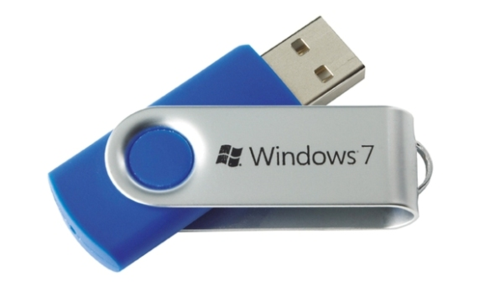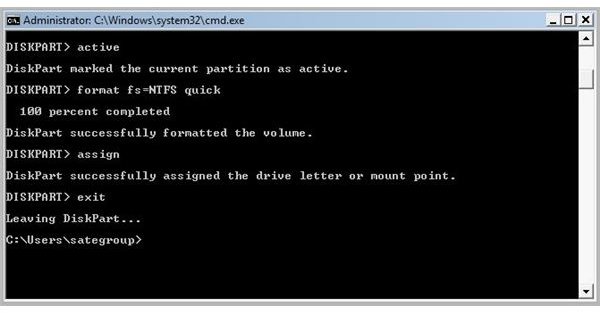

- WINDOWS 7 ULTIMATE PEN DRIVE BOOT HOW TO
- WINDOWS 7 ULTIMATE PEN DRIVE BOOT INSTALL
- WINDOWS 7 ULTIMATE PEN DRIVE BOOT SOFTWARE
- WINDOWS 7 ULTIMATE PEN DRIVE BOOT ISO
- WINDOWS 7 ULTIMATE PEN DRIVE BOOT WINDOWS 7
You may need to partition and format the target USB disk using RMPrepUSB if it is not already formatted as NTFS.
WINDOWS 7 ULTIMATE PEN DRIVE BOOT ISO
This allows the script to access the files within the ISO file as a drive letter.Ģ.

WINDOWS 7 ULTIMATE PEN DRIVE BOOT SOFTWARE
If you only have an ISO file, you can use SlySoft Virtual Clone Drive or ImDisk or any similar software to mount the ISO as a drive volume - e.g.
WINDOWS 7 ULTIMATE PEN DRIVE BOOT WINDOWS 7
The procedure below works and has been tested using an ISO of the RTM/Gold version of Windows 7 and the SP1 version of Windows 7.ġ.You need to have a source DVD or a mounted ISO file (mounted as a drive letter).
WINDOWS 7 ULTIMATE PEN DRIVE BOOT INSTALL
Windows 7 does not contain many USB 3 compatible drivers - so if you try to boot from a USB 3.0 port it will probably crash!Īlternatively - using this method, you could remove an internal hard drive from a system, connect it to your main PC (either directly or using a USB drive caddy), format it and install Windows onto it using the Installer.cmd script in the tutorial, and then put the hard drive back into the original system (or a different system) and boot it.I highly recommend you use a USB hard drive or a USB 3 Flash drive. A USB Flash drive will be quite slow (1-2 hours!) to install and run Windows from, unless you use a fast USB 3 Flash drive, such as BUSBI Boost USB 3 (even on a USB 2 port, USB 3 Flash drives are usually faster than USB 2 drives, but not, of course, as fast as a standard USB hard drive or USB 3 drives on USB 3 ports).You will need to install drivers once Win7 is booting. No drivers are included in the image if a plain Windows installation DVD is used as the source DVD.If you try to boot that USB drive on another system without running Sysprep, you may just get a BSOD (0x0000007B blue screen of death error). This is because on first boot, a fresh copy of Windows will detect what hardware is on the system and install the correct drivers (including the drivers for the boot drive). If you want to move it to another system (once you have booted it on one system) then you need to sysprep it (see ADDENDUM at the end of this page). You cannot just plug the USB drive into another system.You will need to activate Windows using a valid Product Key (which will be locked to the hardware you booted it on) if you want a fully functional version of Windows for over 30 days.Note that there are some pitfalls with this Windows USB drive once you have successfully made it: some netbook Atom 32-bit CPUs) won't run a 64-bit OS, so a 32-bit version of Windows 7 is usually best for these. use a Windows 7 64-bit PC to install say Vista 32-bit OS from a Vista 32-bit installation DVD onto a USB drive, or use a Windows XP system to install Windows 7 64-bit onto a USB drive using this method. The instructions below assume that you have a USB drive (USB Hard Disk - recommended, or USB Flash drive - slow!) and you want to install Windows 7 onto it using a Windows 7 install DVD (or ISO file) as the source. It also now automatically finds and uses the 3 files that are needed from the MS WAIK, so you don't need to manually copy them first. The instructions in that forum post #1 & #2 and some of the prompts in the installer.cmd file that fujianabc provides were however confusing and potentially dangerous (you could accidentally corrupt your system drive) - so I have slightly modified his script to make it clearer and easier to use. This tutorial as based on fujianabc's Reboot.pro forum post 'NT 6.x fast installer: install Win7 directly to USB external drive' and his excellent scripts (now with reg tweak by 'cdob' from reboot.pro -USBBootWatcher is no longer required). it does not matter what is on the internal hard disk of the target system, even if the internal hard disk is broken/not working. Now allow the system to boot to Windows 7 directly from the USB drive.Select the USB drive as the boot device in the BIOS boot menu.Connect the prepared external USB drive (hard disk or Flash drive) to the target system (use a USB 2.0 port NOT a USB 3.0 port!).When you have made it, you can boot from it as follows:

This tutorial does not make a Windows installer USB drive, it actually puts a copy of Windows 7 onto a USB drive and makes it bootable. For 'Removable' USB flash drives, be sure to choose the VHD option (for Win8/10) or it won't boot! NEW! You might like to try WinToUSB which make it very easy to prepare a bootable USB drive containing Win7/8/10 To Go.

WINDOWS 7 ULTIMATE PEN DRIVE BOOT HOW TO
So now you can try Windows 7 without needing to install it onto your internal hard disk! IT WILL ONLY WORK ON A USB 2.0 PORT (see instructions at the end of this page for instructions on how to add USB 3 drivers). Please note: This tutorial enables you to prepare a USB drive so that you can boot directly to Windows 7 from the USB drive.


 0 kommentar(er)
0 kommentar(er)
